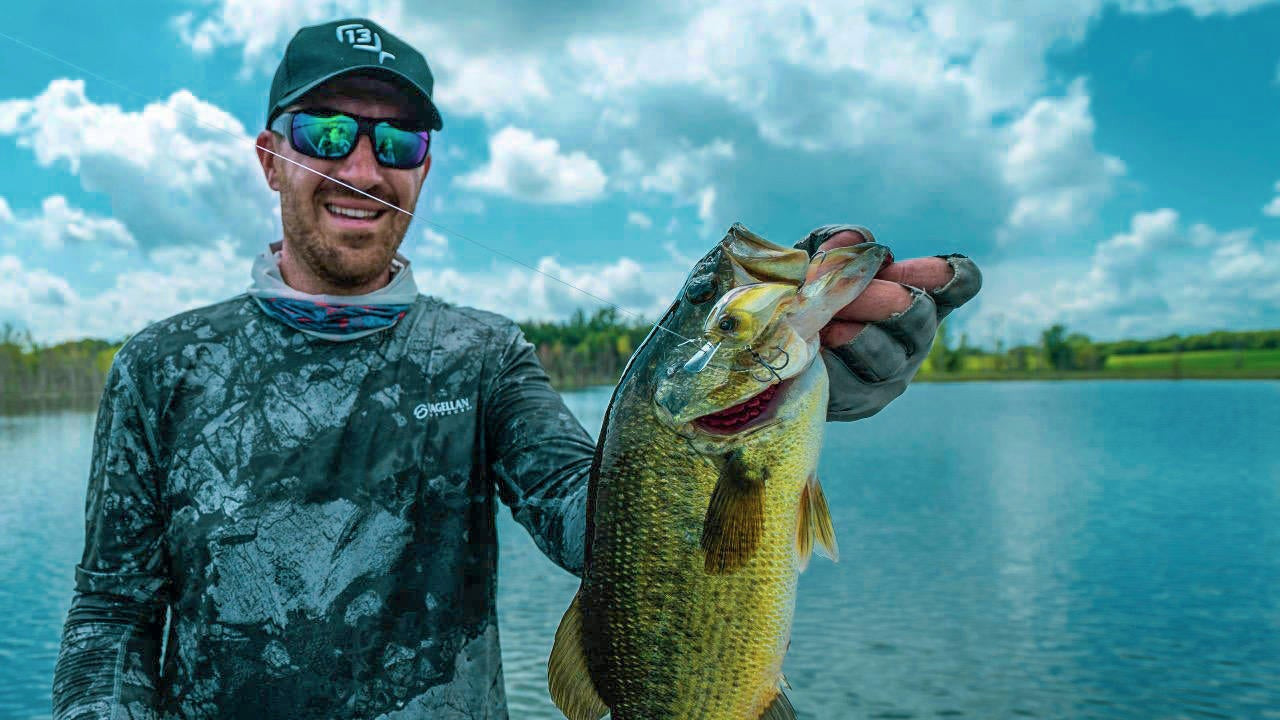Finding bass fast on grass lakes is a challenge that requires a unique approach. Sonar isn’t as effective at marking fish in standing weeds, so pro bass angler Jacob Wheeler uses crankbaits to comb various depths to develop a pattern quickly. In this tip, Wheeler explains how to choose locations on new lakes and break them apart using crankbaits with different running depths and actions.
TACKLE USED
- SHALLOW CRANKBAIT – 13 Fishing Jabber Jaw, color – Lucky Charm
- MID-DEPTH CRANKBAIT 1 – Rapala DT-6, color – Live River Shad
- MID-DEPTH CRANKBAIT 2 – Rapala DT-10, color – Big Shad
- LINE – Sufix Advance Fluorocarbon, 12-pound
- ROD – Duckett J. Wheeler Series Casting Rod, 7’2″ Med Hvy Composite
- REEL – Duckett Paradigm CRI Casting Reel, 6.3:1
Bass can be notoriously challenging to detect in weeds even with a full suite of fish finder sonar technologies. Wheeler resorts to fishing around fast to establish how bass are positioned in expansive grassy areas. To start, he uses shallow diving crankbaits and progressively works his way deeper, clueing in on bites and bass size structure.
Bass in a grass often suspend, so use crankbaits that run at specific depths to dial where bass are in the water column. Lastly, Wheeler explains the importance of changing up line size (diameter) to refine further bait running depth.












